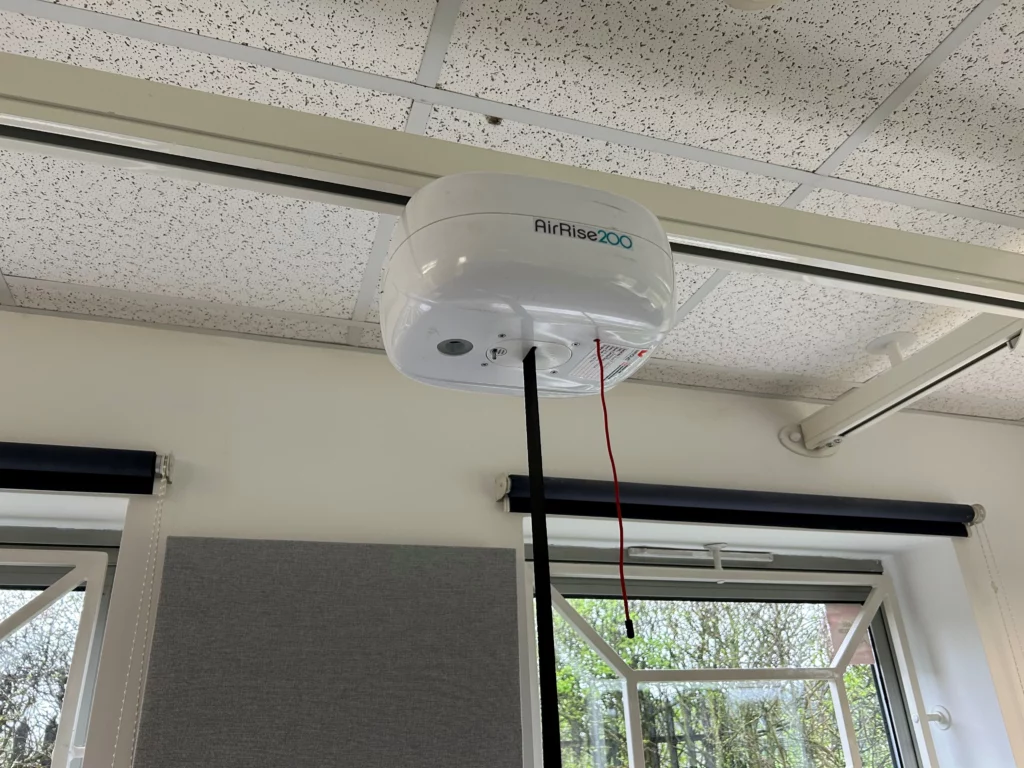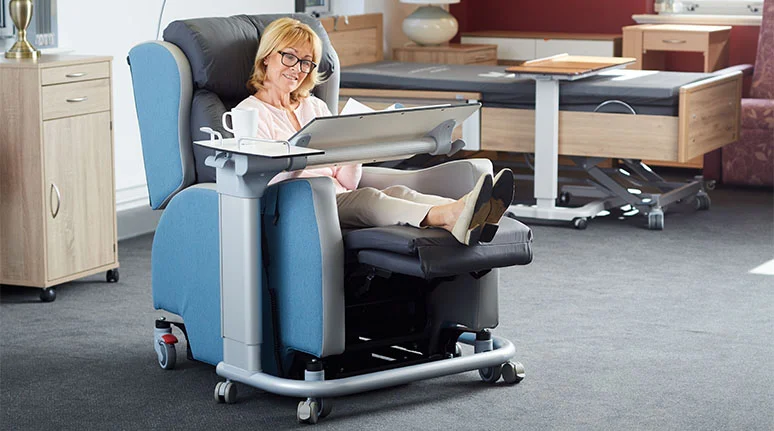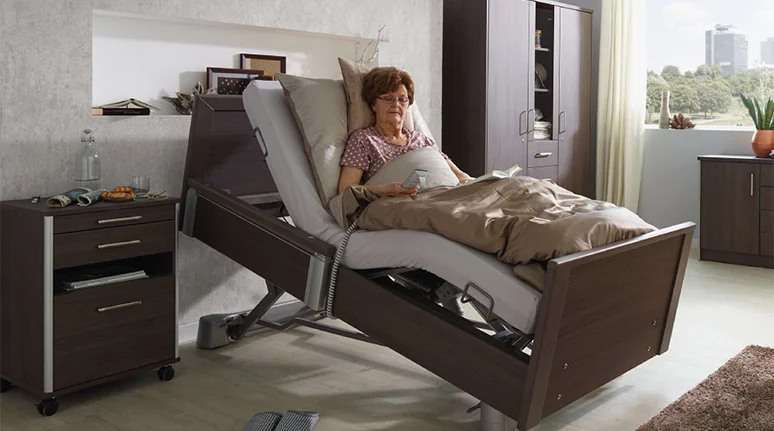Care Home Risk Assessment: Equipment for Resident & Staff Safety
Nursing homes and residential care homes have a responsibility to keep both their residents and staff safe. Carrying out regular risk assessments is a key part of this duty of care. Here we will review what is involved in a care home risk assessment and how the right care equipment can help to safeguard against potential hazards and risks.
The health and safety risks in a care home setting are varied. The carers are looking after elderly or vulnerable people who all have their own individual needs and challenges. These individual differences must be factored into any risk assessments — there’s no ‘one size fits all’ solution.
Risks to the staff themselves must also be considered. Being a carer is a very hands-on labour-intensive job. So, there is a risk of injury, particularly for staff responsible for moving and handling.
Risk Assessment in Care Homes Examples
Although it’s important to think about the unique aspects of each care home, there are five key steps that should be included in all care home risk assessments:
1) Identify hazards
You will need to look for hazards in different scenarios and in different areas of the care home.
Example: When carrying out bed to chair transfers there are hazards to both the resident and the carer. For the carer, they are at risk of physical injury from the strain of lifting or even from the resident if they become distressed and struggle. For the resident, they are at risk of injury from poor technique or lack of support. They are also at risk of distress and discomfort from the transfer process.
2) Determine who is at risk, and why?
There will be people in the care home who are at greater risk from certain hazards. You will need to identify which staff and residents are at risk and how they may be harmed by the hazard.
Example: Any resident that requires transfers and any staff responsible for moving and handling are at risk from hazards associated with bed to chair transfers.
Potential harm to staff could include back injury, having to take time off work and the long-term health effects of any prolonged injury. Whereas harm to residents is more likely to occur from falls or withdrawal due to them wanting to stay in bed rather than be transferred.
Within these at-risk groups, there may be specific individuals at an even greater risk of harm. Such as, staff responsible for moving and handling bariatric residents may be at higher risk of straining themselves and residents with Dementia may be more likely to become distressed during transfers.
3) Evaluate each hazard and implement safety measures
Once you understand the possible hazards, and how they might harm residents and staff, it is time to evaluate the safety measures you can implement to protect against a hazard.
Safety measures can include training, procedures, and equipment.
Example: To protect staff against injury during bed to chair transfers you might opt to do three things:
- Carry out staff training on best practices for moving and handling to reduce injury risk.
- Introduce a procedure that ensures two carers perform transfers for bariatric residents.
- Install overhead hoist systems in rooms for high-dependency residents to avoid frequent manual patient handling.
4) Make notes on your assessment
Record the results of the risk assessment so you can track your progress and refer back to what changes were made and why.
5) Review regularly
New hazards will emerge over time and the effectiveness of safety measures may change. Therefore, it is important to review risk assessments often to keep health and safety procedures up to date.
Care Equipment for Health & Safety
Ensuring the care home has access to appropriate equipment is one of the most effective ways to take action and help keep residents and staff safe.
Let’s look more at how care equipment can underpin care home risk assessments for moving and handling and infection control.
Moving and handling risk assessment
Moving and handling is a major health and safety concern in care homes. If carried out incorrectly, transfers pose a significant injury risk to both residents and staff.
Due to the high risk, hoists are commonly used in care homes to make patient handling safer for everyone. They bear the weight of the user, taking the strain off the carer. The resident is also made more secure and comfortable by using a lifting sling.
Mobile Hoist
A mobile hoist is a good option if you’re looking for something portable.

The MobiRise250 is an electric hoist that can safely lift up to 250kg (39 stone). It has wheels for easy transportation around the care home and can facilitate lifts from the floor, beds, chairs, and toilets.
However, mobile hoists typically require two carers to operate — one to work the hoist and one to care for the resident. This isn’t always feasible in busy care home environments. There is also the risk that a mobile hoist may not be available when you need it. Someone else may be using it, or it could be stored on the other side of the home. Residents can end up waiting for transfers, leading to distress and delays in their care.
So, if you have several residents that require moving and handling assistance, installing overhead hoist systems could be a better option.
Overhead Hoist
An overhead hoist system consists of a track that is fitted to the ceiling and a moveable hoist unit. A spreader bar and sling are then attached to the hoist unit to lift and transfer the resident.
Our AirGlide360 track system can be installed in many different layouts. This means it can facilitate many different transfers — bed to chair, bedroom to bathroom, chair to wheelchair etc. You can safely transfer someone between any points covered by the track!
One of the key benefits of this hoist system is that it can be safely operated by just one carer. Intuitive controls and automatic track components mean one person can focus on the resident whilst working the hoist. Plus, because everything is attached to the ceiling you don’t have to worry about storage when the hoist isn’t in use and it doesn’t cause a trip hazard.
Infection control risk assessment
Care equipment and furniture are key considerations in infection control risk assessments for care homes. Certain materials and designs will allow dirt and debris to build up and can become a breeding ground for bacteria. The equipment also comes into contact with lots of different people, so there’s the added risk of cross-contamination.
That’s why we’ve spent years perfecting our product designs to create care equipment that’s good for infection control!
Here are some of the most popular choices for care homes:
Arene rise and recline chairs

Originally designed for hospices, and further adapted to suit any care environment, the Arene is built for infection control. The Dartex upholstery is waterproof and easy-clean to prevent ingress. Plus, on the infection control version, all cushions attach onto the frame magnetically. This avoids Velcro and stitching that create nooks and crannies where bacteria can harbour and grow.
Formidabel bed range

The Formidabel profiling bed is stylish enough to fit in a hotel room, but it doesn’t compromise on infection control! The mesh side panels are made from anti-bacterial material and can be easily removed for washing. Opt for a wooden headboard and footboard for easy disinfection.
Servicing & Maintenance
Regular servicing and maintenance are essential for safe equipment upkeep.
LOLER (Lifting Operations and Lifting Equipment Regulations) means that lifting hoists must be tested every six months to ensure they operate safely. Whereas beds and mattresses should be serviced annually to ensure they are safe and don’t pose an infection risk.
The Innova servicing department are highly trained and experienced in servicing all of our equipment. They can come out at a time that suits you to perform checks or carry out repairs. Not only does this keep your equipment operating safely, but good maintenance practice also increases equipment lifespan, so you get more use for your money!
When you take out a 2-year servicing contract, we’ll also double your warranty. Contact us to discuss servicing options.
Summary
Risk assessment in care homes should cover five steps — identify hazards, determine who is at risk, evaluate the risks and implement safety measures, record your results, and undertake regular reviews. You also need to factor the unique aspects of a care home and individual resident/staff needs into the assessment. Getting the right care equipment is an effective way to protect against many risks in care homes. Specialised beds and chairs help with infection control, whilst hoist systems can improve moving and handling safety. Regular servicing and maintenance are then key to keeping equipment in optimal condition so it can help to keep residents and staff safe!
Other blogs you may be interested in
What you need to know about patient lifting hoist regulations in the UK
Hydrotherapy pool air handling systems: what you need to know
What happens in a power wheelchair assessment?
Introducing UltiLift: The ultimate home lift for style in any space
Can we help with anything?
Be sure to use the contact form and reach out to us if you have any questions about the content above.